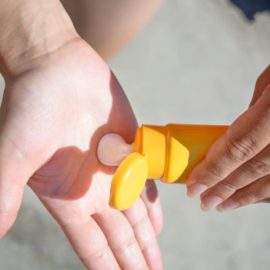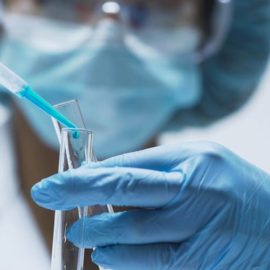While there are many approaches to understanding skin damage repair, current cutting-edge research is focusing on the impact of circadian rhythms and integrated skin health.
Generally speaking, good sleep hygiene practices regulate circadian cycles which in turn show a positive outcome for overall health, with antioxidant and regenerative processes being directly linked to these positive effects.
As dermoscience advances and the role of sleep and circadian rhythms in skin damage repair is more and more understood, the development of skin care targeting these processes was just a matter of time.
Content
The role of sleep and circadian rhythms in skin damage repair
In 2017, the Nobel Prize in Physiology was awarded to a team of three scientists for their discoveries around the molecular mechanisms that control circadian rhythms. This granted an unprecedented attention towards what are commonly referred to as our “biological clocks”, which had been traditionally overlooked.
The most well-known effect of desynchronized circadian rhythms is an alteration in sleep-wake cycles. However, the cutting-edge science of well-aging has been quick to detect its impact on skin, concluding alterations in these cycles can affect skin’s physiological metabolism, thus leading to signs of fatigue and premature ageing.
The underlying mechanism at work is the perfipheral “circadian clocks” recently discovered. In charge of regulating local cellular processes in addition to the ones of the central circadian clock in the brain, they are in charge of a number of processes, including transepidermal water loss, keratinocyte proliferation, skin blood flow, and skin temperature.
These peripheral (because they’re located on the epidermis, not in the brain) circadian clocks work is as follows: a network of feedback loops made of activators and repressors are regulated by two key “clock genes”: CLOCK (circadian locomotor output cycles kaput) and BMAL1 (brain and muscle ARNT-like).
These represent a control for the rhythm-generating molecular circuitry that activates all processes involved with circadian cycles. As such, and among other tasks, they are in charge of regulating hundreds of genes related to key physiological functions, such as cell growth, DNA damage-repair, immune function, and many other metabolic processes.
In fact, the circadian clock on cutaneous cells focuses on four key tasks:
- Regenerative metabolism
- Cell proliferation
- Cell division
- Keratinocyte differentiation in order to activate natural mechanisms for skin damage repair, particularly for the skin barrier
While the first three take place in the basal layer of epidermis in late afternoon and in the evening, at night, it’s time for keratinocyte differentiation.
As can be inferred from all the functions in skin damage repair we’ve mentioned, the disruption of circadian cycles activates a cascade effect on skin that can lead to issues regarding cellular functions. The effects of disruptions in sleep (and, as a consequence, in circadian rhythms) in the skin can go from mild to severe, including:
- An impaired skin barrier function, which may result in increased transepidermal water loss (TEWL) and dryness, among other issues.
- Altered cell proliferation and differentiation, meaning the balance between cell growth and cell death may be disturbed, and thus contributing to a higher probability of developing skin conditions including psoriasis, or abnormal keratinization.
- Changes in melatonin production: melatonin effects on body and skin include acting as a powerful antioxidant, as protector against harmful ultraviolet (UV) radiation and as an agent in improving skin hydration and its barrier function. As melatonin production is regulated by circadian rhythms, these disruptions can lead to issues in skin damage repair capacities. In fact, decline in one melatonin receptor (MTR1) was reported recently resulting in a higher propensity for cellular damage and a loss of repair in the skin from melatonin (Serravallo, M., et al., 2013).
- Increased oxidative stress: because circadian rhythms help coordinate antioxidant defence mechanisms in skin cells, disruptions in this area can lead to increased oxidative stress within the cells.
Skin damage repair via a resynchronization of circadian rhythms
As the cosmetic industry enters a new era in which beauty and skin health are understood in a holistic manner, the pro-sleep beauty segment is set to become crucial. This is in part confirmed by the rise of facial products formulated with melatonin or melatonin-like effects, building on the melatonin effects on body and skin we’ve mentioned above.
As brands look for innovative formulas for skin damage repair, it’s important to acknowledge the role of promoting sleep and anti-stress claims as part of an overall wellbeing narrative that’s succeeding in today’s beauty industry.
This is precisely the context in which Provital’s Circanblue™ appears. A disruptive vegan and postbiotic active able to resynchronize the skin’s natural biorhythm in order to counter digitally-induced desynchronization of the circadian cycle for healthy skin well-aging.
With a comprehensive effect on epidermal resynchronisation of biological clocks and the cellular processes they govern, Circanblue™ has shown in vitro efficacy in the following areas:
- 24h-synchronization of the gene expression of CLOCK and BMAL1 on human primary keratinocytes (HPK)
- Gene expression increase of some repairing circadian-related proteins
- Gene expression increase of detoxifying enzymes activated by circadian cycles.
Additionally, these outstanding developments align with the rise of probiotics and fermentation-enabled wellness products. Providing an extension into the skincare space, Circanblue™ is obtained from a lysate of the probiotic Lactococcus lactis, thus derived from a plant-based bacterial fermentation while also confirming its vegan origin.
All in all, Circanblue™ allows brands to leverage state-of-the-art biotechnology to align with the sustainable and science-based effective skin care that consumers are seeking out for skin damage repair.
No comments yet
There are no comments on this post yet.





Leave a comment